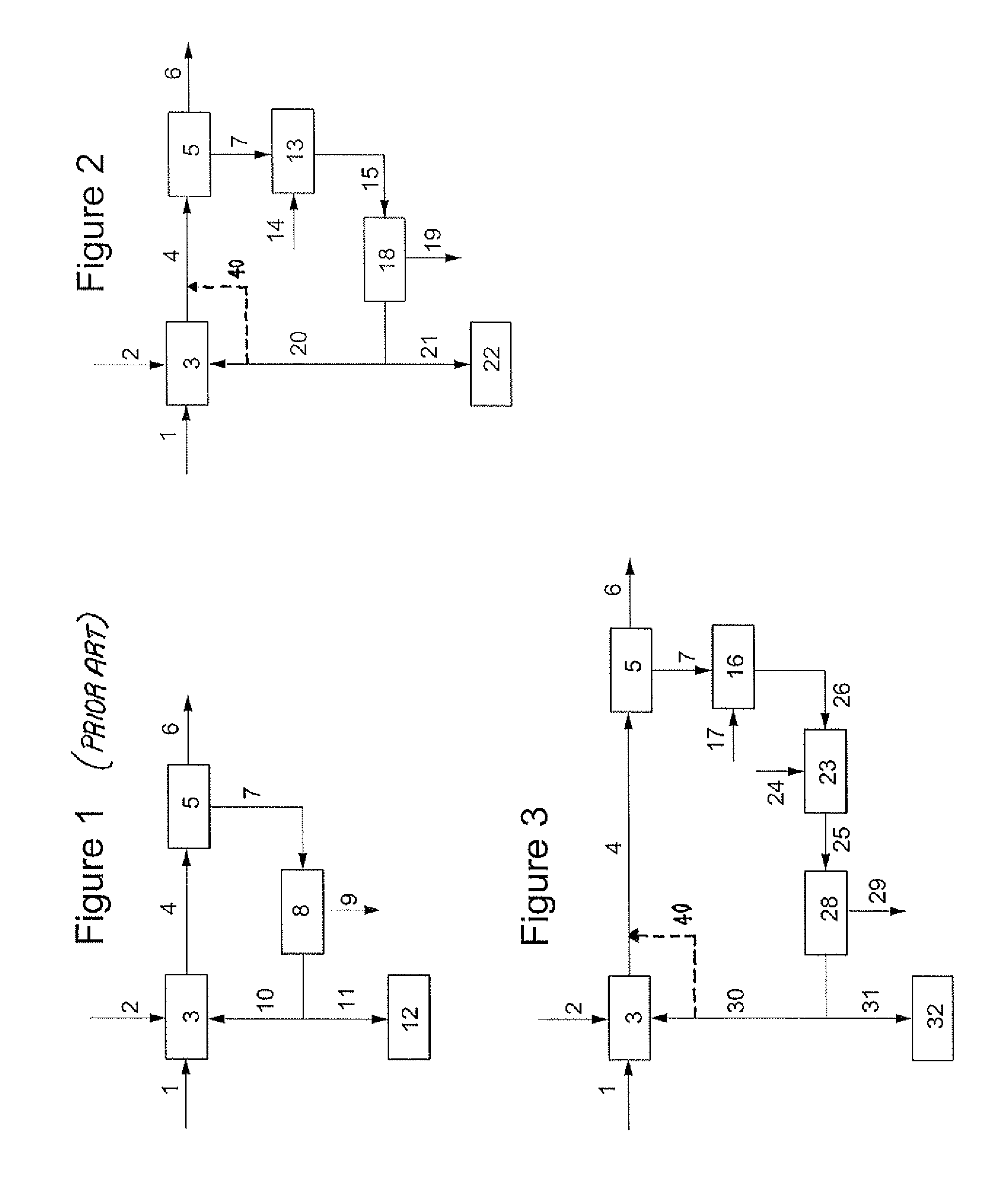Method & apparatus for processing fischer-tropsch off-gas
a technology of fischertropsch and off-gas, which is applied in the direction of combustible gas catalytic treatment, sustainable manufacturing/processing, and separation processes, etc., can solve the problems of reducing the flue gas carbon dioxide level, and reducing the effect of carbon dioxide in the flue gas
- Summary
- Abstract
- Description
- Claims
- Application Information
AI Technical Summary
Benefits of technology
Problems solved by technology
Method used
Image
Examples
first embodiment
[0052]FIG. 2 illustrates a process according to the invention. The same initial procedure is followed as in FIG. 1, until a separated Fischer-Tropsch off-gas from unit 5 is obtained. Hereafter, the Fischer-Tropsch off-gas is fed trough line 7 to a water gas shift reactor 13. Steam is provided through line 14 to reactor 13, in which the Fischer-Tropsch off-gas is mixed with steam, and the CO present in the Fischer-Tropsch off-gas is reacted to H2 and CO2.
[0053]The CO depleted Fischer-Tropsch off-gas is fed through line 15 to Carbon Capture unit 18, which CO2 is removed from the Fischer-Tropsch off-gas. A CO2 rich stream is separated off through line 19. Suitably, the CO2 is stored or re-used.
[0054]Part of the carbon dioxide depleted Fischer-Tropsch off-gas is recycled through line 20 to the syngas manufacturing unit 3. Optionally, some or all of the carbon dioxide depleted off-gas may be diverted through line 40 and combined directly with the syngas in line 4. Another part of the car...
second embodiment
[0056]FIG. 3 illustrates a process according to the invention. The same initial procedure was followed as in FIG. 1, until a separated Fischer-Tropsch off-gas from unit 5 is obtained. Hereafter, the Fischer-Tropsch off-gas is fed through line 7 to steam methane reformer 16. Steam is provided through line 17 to reformer 16, in which the Fischer-Tropsch off-gas is mixed with steam, and the methane present in the Fischer-Tropsch off-gas is reacted to H2 and CO2. The methane depleted Fischer-Tropsch off-gas is fed through line 26 to a water shift reactor 23. Steam is provided through line 24 to reactor 23, in which the Fischer-Tropsch off-gas is mixed with steam, and the CO present in the Fischer-Tropsch off-gas is reacted to H2 and CO2. The methane and CO depleted Fischer-Tropsch off-gas is fed through line 25 to Carbon Capture unit 28, in which carbon dioxide is removed from the Fischer-Tropsch off-gas. A carbon dioxide rich stream is separated off through line 29. Suitably, the carbo...
PUM
| Property | Measurement | Unit |
|---|---|---|
| Energy | aaaaa | aaaaa |
Abstract
Description
Claims
Application Information
 Login to View More
Login to View More - R&D
- Intellectual Property
- Life Sciences
- Materials
- Tech Scout
- Unparalleled Data Quality
- Higher Quality Content
- 60% Fewer Hallucinations
Browse by: Latest US Patents, China's latest patents, Technical Efficacy Thesaurus, Application Domain, Technology Topic, Popular Technical Reports.
© 2025 PatSnap. All rights reserved.Legal|Privacy policy|Modern Slavery Act Transparency Statement|Sitemap|About US| Contact US: help@patsnap.com

